Homemade Fruit Leather Recipe
on Sep 08, 2020, Updated Aug 22, 2024
This post may contain affiliate links. Please read our disclosure policy.
Making fruit leather in the oven is a fun and simple way to preserve seasonal fruit and one of your favorite treats to make for traveling, hiking, or school lunches.
You don’t need a dehydrator for this simple fruit leather recipe, just your oven! A blender makes quick work of the pureeing and you can make just about any fruit combinations you like.
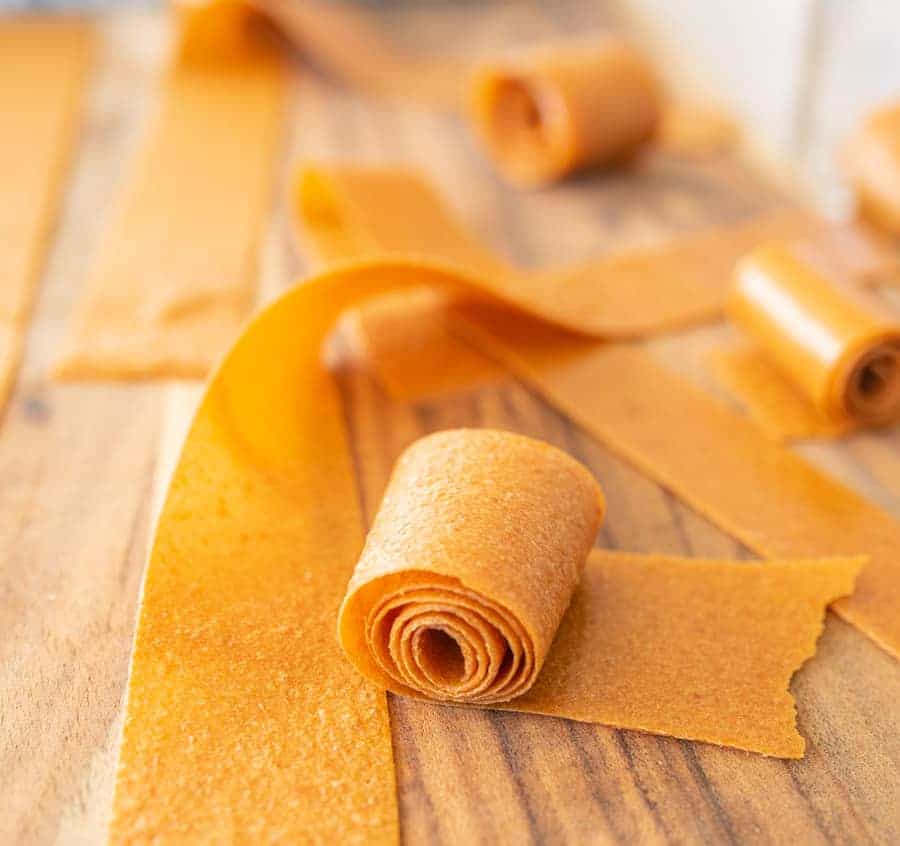
This fun and easy snack to make will be a hit with the kids, and adults! You can even roll up the fruit leather to make your own homemade fruit by the foot!
Table of Contents:
Table of Contents
Why You’ll Love this Recipe:
- Easy and fun to make
- The recipe can use any fruit you have on hand! The flavor combos are endless!
- You do not need a food dehydrator! Your oven will do just fine.
Ingredients:
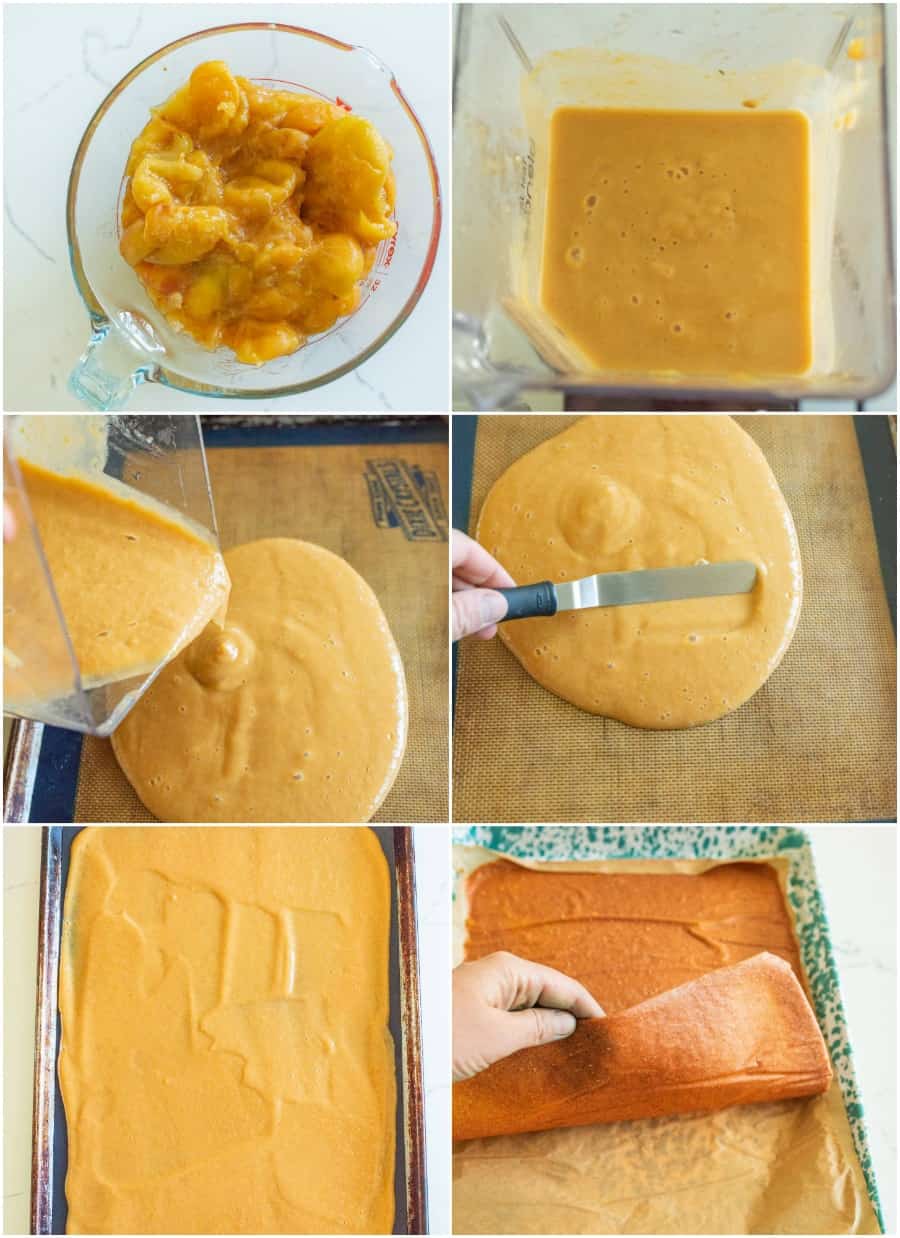
- Fruit: you have SO much flexibility with this recipe. You can use one fruit or a combination of fruits. And fun fact, you can even use frozen fruit or fresh fruit! I tend to make fruit leather when I have a bumper crop of something and need a way to preserve them besides freezing or canning.
- Sugar: this is an optional ingredient and will depend on your tastes as well as how sweet your fruit was to start with. You don’t have to include added sugar but sometimes a little really makes for a lovely end product.
- Lemon juice: I like to use just a little to help preserve the color of the fruit. Using just a bit of lemon juice helps apricot, apple, peach, or pear fruit leather to not turn totally brown from oxidation. It also adds a nice balance to sweet fruits.
- Additions: you can add things to your fruit leather to make it your own like cinnamon or even fresh ginger.
See recipe card below for full information on ingredients and quantities.
Favorite Flavors for Homemade Fruit Leather:
- Apples plus dash of cinnamon
- ¾ peaches with ¼ mixed raspberries and/or blackberries
- ¾ apricots with ¼ blueberries
How to Make Fruit Leather
- Prep your fruit! Remove pits and stems but I don’t typically remove any skin. I like the fiber.
- Puree in blender. If it’s not blending up well, add the smallest amount of water that you can to help it blend. I try to not add any (really ripe apricots and peaches shouldn’t need any).
- Add sugar if it needs it. It should be slightly sweet to the taste.
- Add lemon juice if using a fruit that oxidizes and turns brown. This helps the fruit leather to retain it’s color and not turn too brown.
- Spread it out on a baking sheet lined with parchment paper or a silicone mat. Get it as even as possible without touching the edges of the tray.
- Bake on the lowest your oven will go until it is no longer tacky, about 6-8 hours depending on your oven. See the recipes notes on how to make this in a food dehydrator.
- Let the fruit leather cool and then cut it into strips and store in an air-tight container. I like to roll them up and make homemade fruit roll ups.
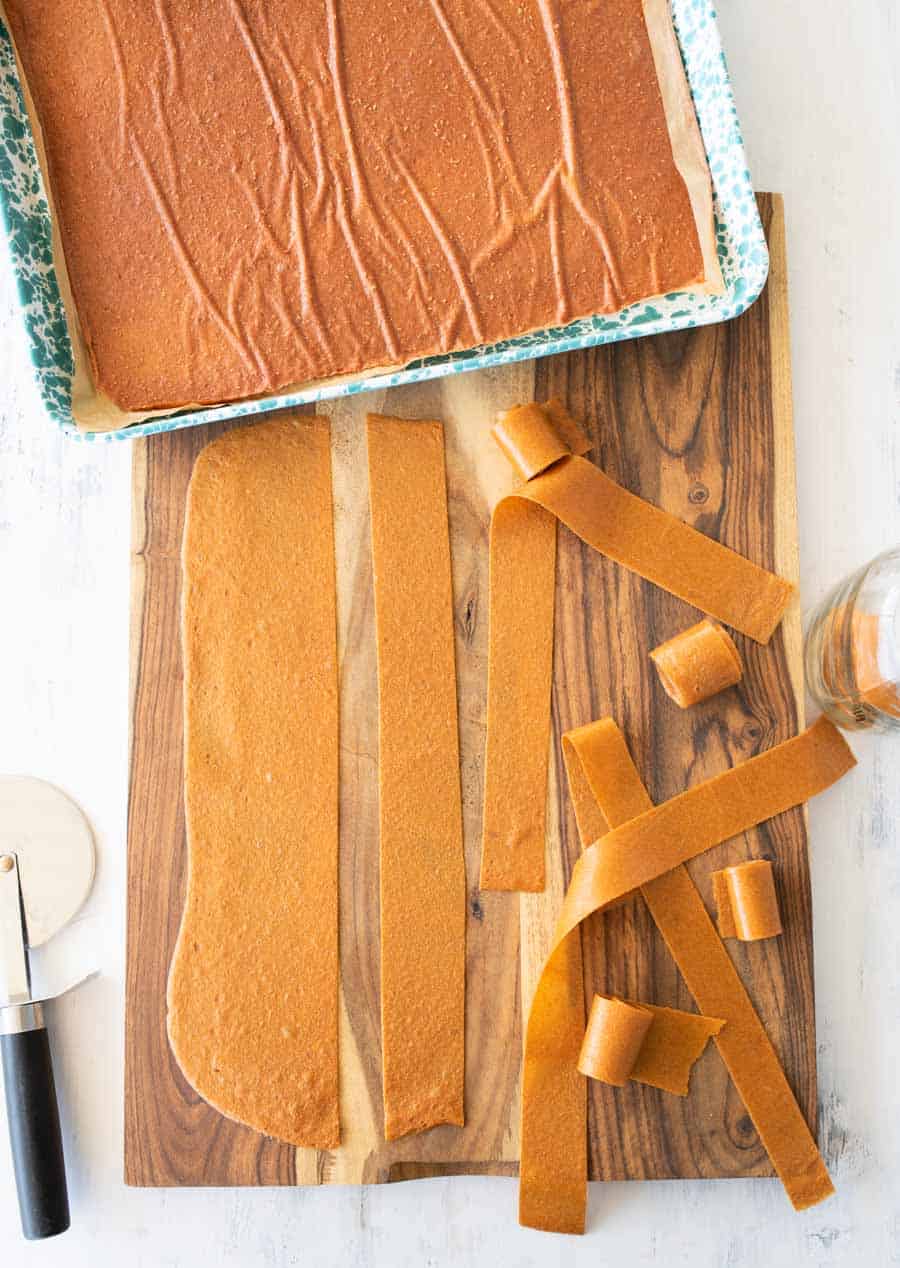
Any fruit you have ;the flavor combinations are endless! I love to use a base of peaches or apricots. Apples, mangos, cherries, blackberries, raspberries, and blueberries are also great!
Rolled up fruit leather can be kept in a glass mason jar with a lid or in an air-tight container.
Fruit leather can be kept in the pantry for about 2 weeks. If it wont get eaten that fast, I’ll keep it in the fridge to ensure it doesn’t mold.
If you live somewhere humid, skip the pantry and keep your fruit leather in the fridge in an air-tight container.
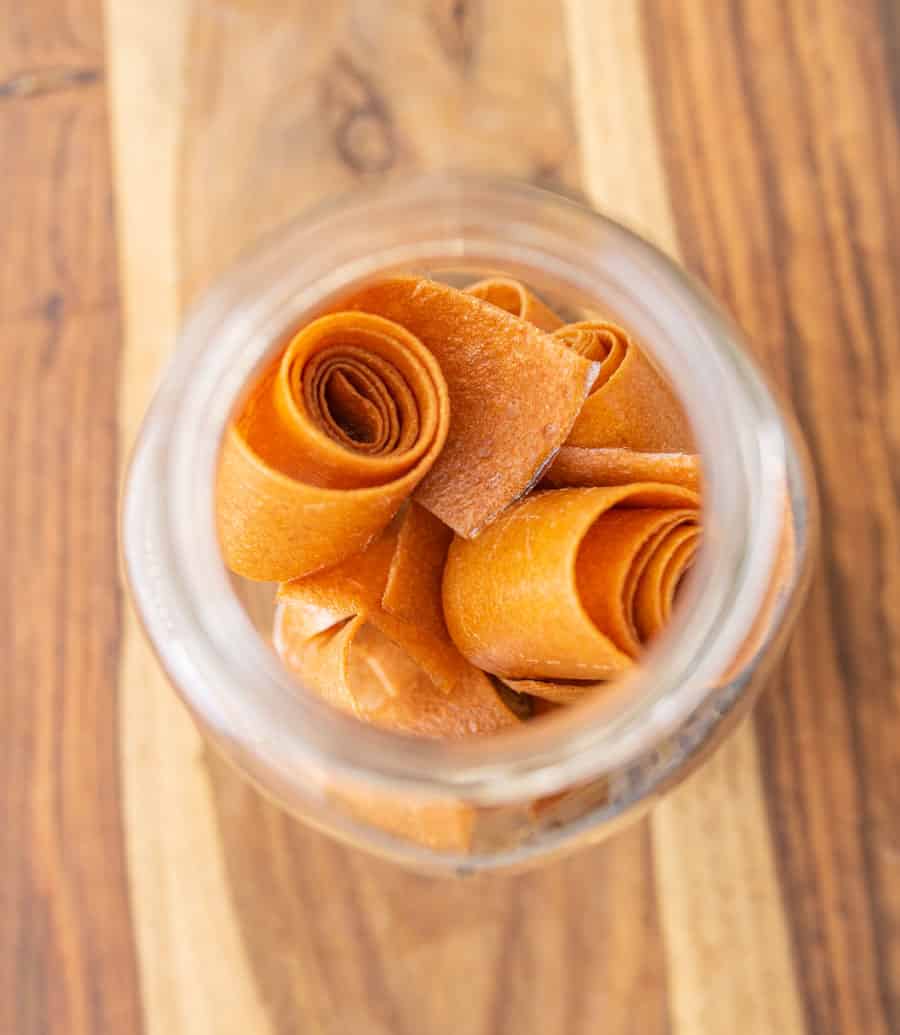
More Snack Recipes to Consider:
Cornbread Recipes
Crispy Cornbread Fritters: A Simple Southern Delight
From Scratch Recipes
Cherry Energy Balls
Smoothies
Strawberry Kiwi Smoothie
Ice Cream
Pistachio Gelato
Did you make this recipe? Leave a ⭐️ review and share it on Instagram, Facebook, or Pinterest!
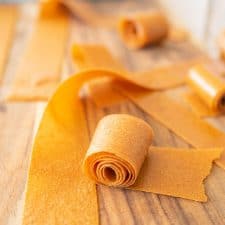
Fruit Leather
Ingredients
- 4 cups ripe fruit, (fresh or frozen)
- 1 tablespoon of lemon juice, (fresh or bottled)
- Sugar to taste, (I like to add at least 1 tablespoon for taste and up to ⅓ of a cup, depending on ripeness of fruit)
- 2 large rimmed baking sheets
- 2 baking mats or pieces of parchment paper to fit baking sheets
Instructions
- Prepare the fruit by washing it and removing any large seeds or pits (remove the seeds from pears and apples and the pits from plums, peachs, and apricots, the small seeds in berries I don’t worry about). There’s no need to remove any skins.
- Cut any larger fruit into halves or quarters to help the blender process them.
- Place the fruit and lemon juice in the jar of your blender. Blend until very smooth. If you are having trouble getting the fruit to process (it’ll depend on how moist/ripe/type of fruit), add as little water as possible to help the blender process the fruit. I’ll generally add 1 tablespoon at a time until the blender is able to work well. Often times you won’t need to add any water at all, that’s preferred as it will shorten you drying time to have less water in the fruit puree. You can also use small amounts of fruit juice to help the blender along instead of water.
- Taste the fruit leather and adjust the taste with sugar. You’ll want it to be a bit sweet but not too sweet.
- Blend in the sugar if you added any.
- Place the baking mats or parchment paper in the bottom of the baking sheets (my baking sheets are 11 by 16 inches).
- Divide the fruit mixture evenly between the two pans, pouring it into the center of the pan.
- Use a spatula (an offset metal spatula like you’d use to ice a cake works great), to evenly spread the fruit leather over the pan taking care to not touch the edges of the pan or get off of the baking mat/parchment paper. The more even you can spread it the better.
- Adjust your oven racks so that they are in the upper middle and lower middle of the oven.
- Place the prepared pans into the oven on the two racks and turn your oven on to the lowest temperature it’ll allow. Mine will let me bake at as low as 170 degrees F. The lower the better.
- Bake for 3-6 hours or until the fruit leather is no longer tacky to the touch. It’s OK to open the oven to allow some of the steam to escape occasionally and to rotate the pans in the oven to help them to cook evenly.
- Allow the pans to cool completely before removing the fruit leather from the pans and cutting into strips to store.
- If you made the fruit leather on parchment paper you can just cut the parchment paper and the fruit leather together, making homemade “fruit by the foot”. This is a great idea for sending fruit leather to school in lunch boxes or to store it for traveling as it’s less likely to stick together (and my kids love peeling it from the paper themselves). I’ll use kitchen shears to cut the fruit leather and paper into 1 inch wide strips. Then roll and store and in air-tight container.
- If you used a baking mat, simply peel the fruit leather from the mat and place it on a cutting board. Use a pizza cutter to cut it into 1 inch wide strips. Roll and place and an airtight container.
Notes
- Fruit leather is shelf stable for about a week. If you are going to store it for longer, place it in an air-tight container in the fridge for longer storage.
- If you didn’t spread the puree very evenly parts of the fruit leather will be dry while other parts are still sticky or tacky. If this has happened to you, when the majority of the fruit leather is dry you can turn off the oven and let the fruit leather rest for several hours or overnight. This will give the rest time to dry in a warm oven while preventing the dry part from over drying and becoming brittle like fruit chips.
- You can for sure make this recipe with a dehydrator and dehydrator trays, just take a look at the instructions that came with your dehydrator on the best timing and settings for fruit leather but this recipe will definitely work for it too.

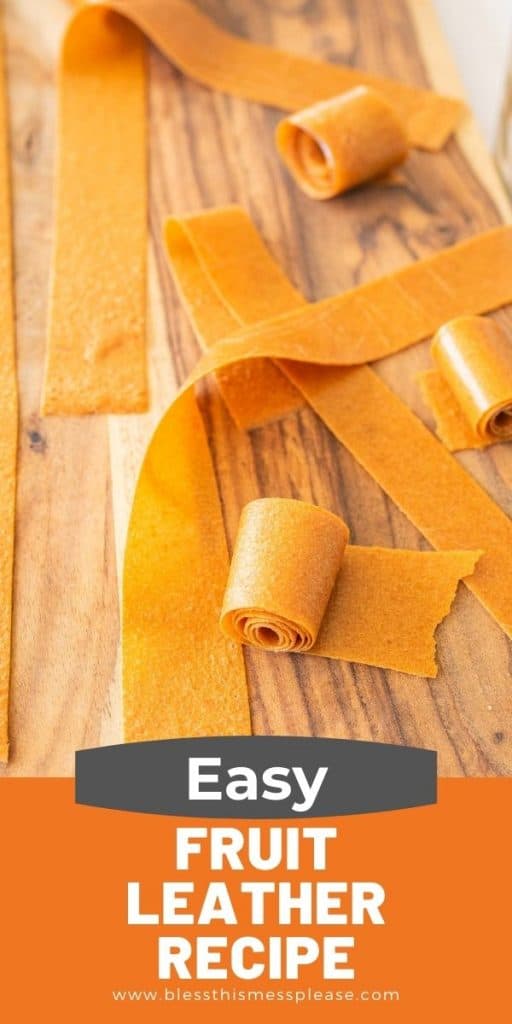
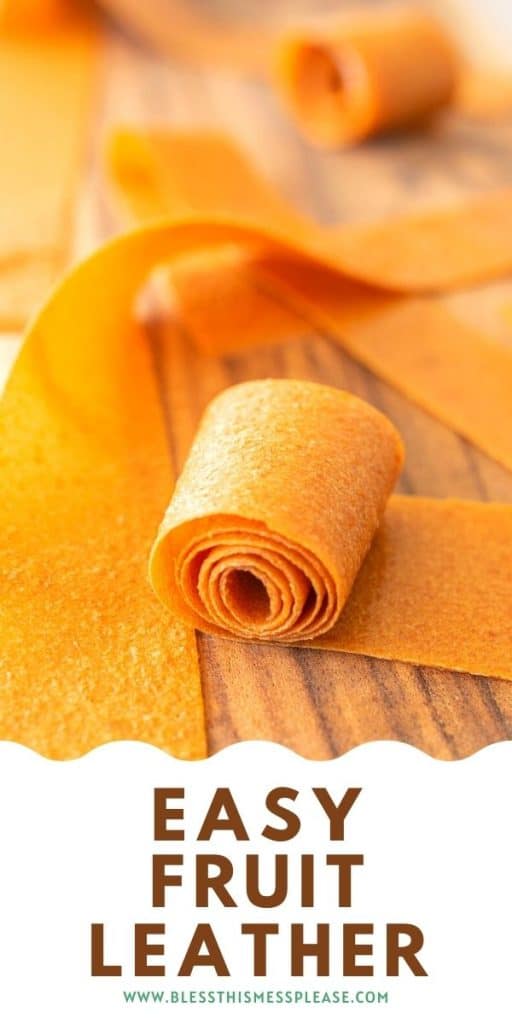
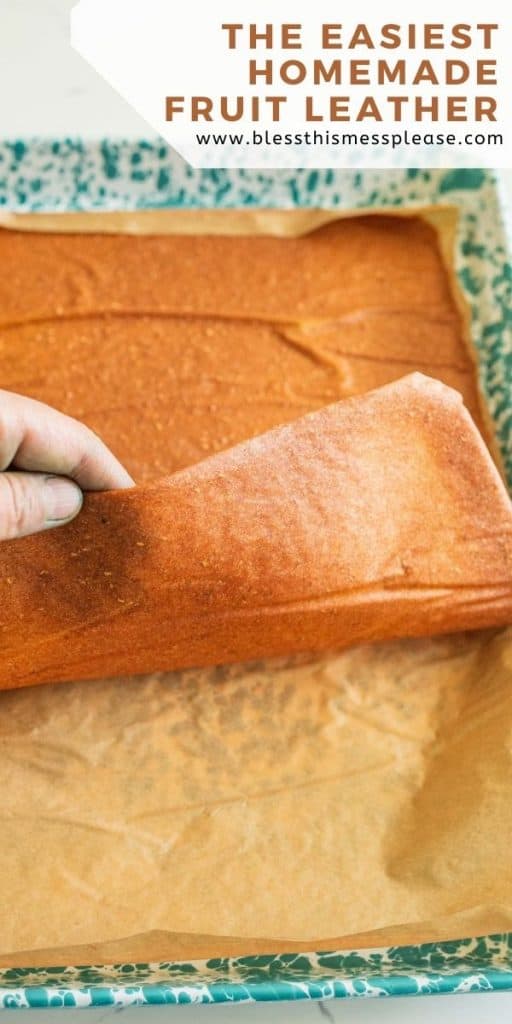
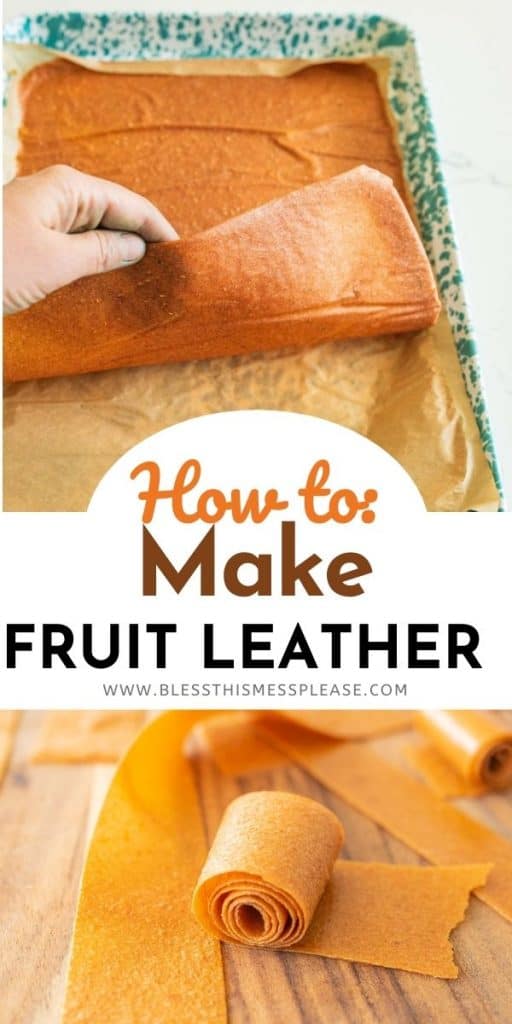

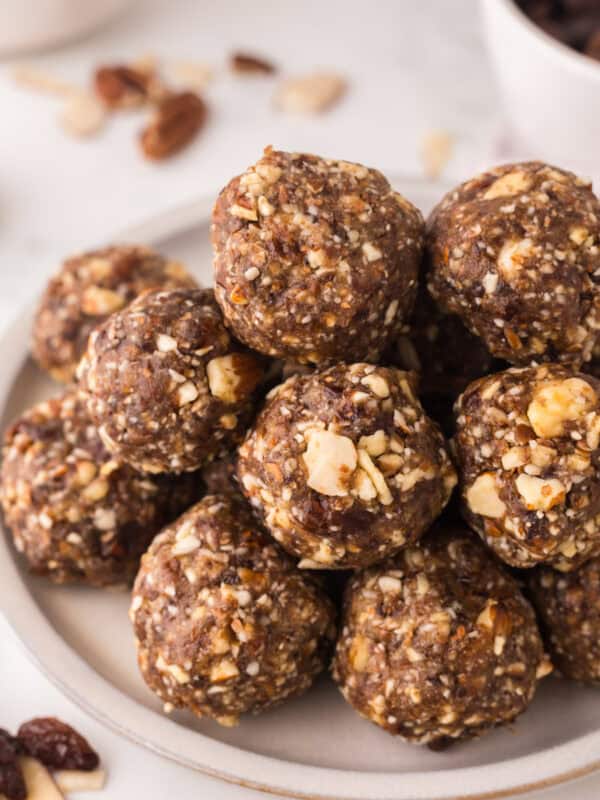
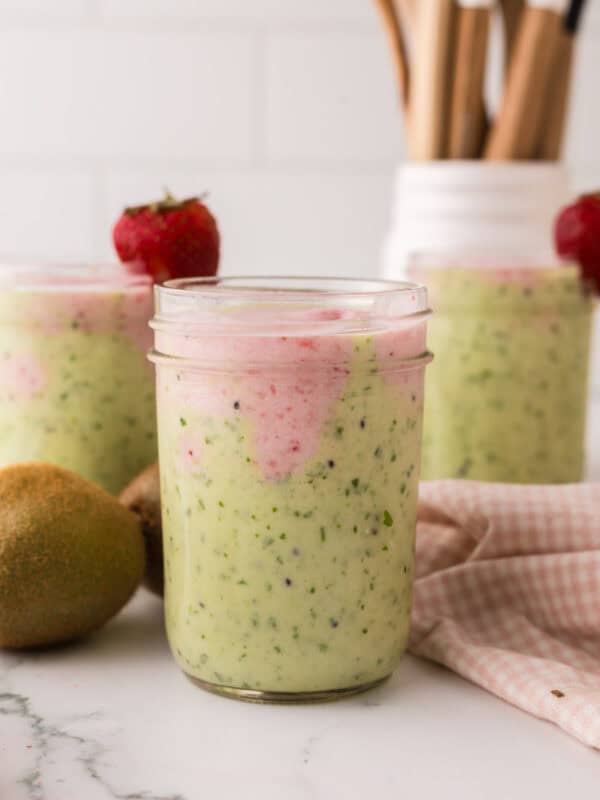
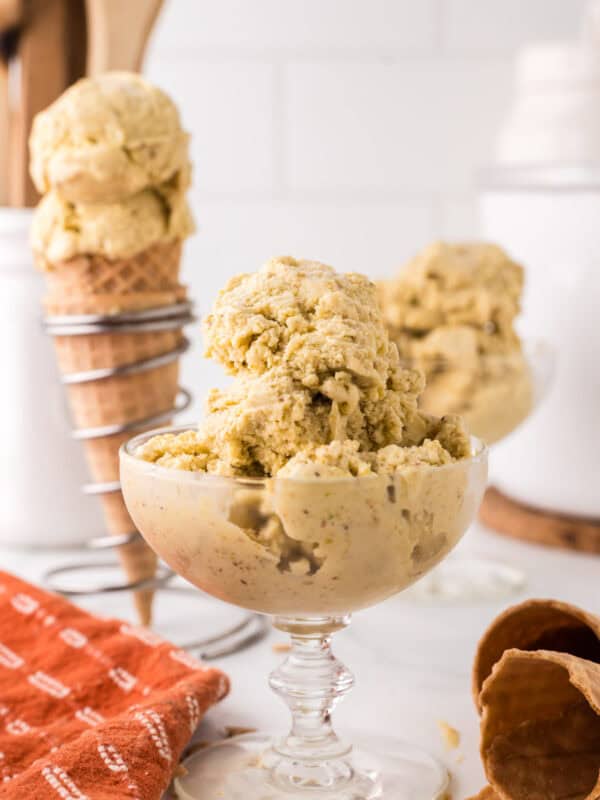






Some recipes say to cook the fruit and yours doesn’t. Any comments on this? Clearly you don’t find it necessary
You don’t need to at all! I think most people cook it to make it softer to mash or puree but if you are using a high powered blender, there’s not need to cook it first…
I use a baking silicone mat to spread my fruit on, then when it’s dry I place the fruit on parchment paper to cut it. I use great parchment paper and have had the same issue on and off when it sticks, even with the same batch where one comes off on one pan and the other doesn’t. The silicone mat has saved me and makes it simple 🙂
I’ve had issues with cheap parchment paper, you could try spraying it with a little cooking spray or buying a different brand…
I’ve been making fruit leather first for my daughter and now for my grandchildren for almost 40 years, first in a 20-stage dehydrator and now in my oven. Although I have a dehydrating setting in my oven, I was pleased to see that someone had perfected making the leather without that feature. If I could pass on a few tips I’ve learned over the years:
1 – My family is obsessed with apple fruit leather, so each year my husband and I can up to 50 quarts of applesauce to have handy to make the fruit leather year round. I have a Squeezo which makes processing the apples for sauce quick and fun with the grandchildren’s help.
2- With any of the fruit leathers I make, I always keep the ingredients as simple as possible, as my goal is to eliminate as many additives and preservatives as possilbe. EX: We make our applesauce with the sweetest apples and only add organic cinnamon. Or, another favorite is to puree thawed sweet fruit (like peaches) and spread those on the pan to dehydrate.
3- If you like a thicker fruit leather – you can double the amount you put in the pan – it simply takes twice as long to dehydrate. (It is done when it is the texture of soft leather and no longer sticky to touch).
Fruit leather has been the one treat that every child I have ever made it for begs me to make. It goes in Christmas stockings, gets mailed to grandchildren for holidays and birthdays, and one of my granddaughter’s takes a batch back to college with her each time she comes home – to share with friends (or I’ve discovered with random people on the plane). That is, if she doesn’t eat the entire batch herself in one sitting (kid you not!)
So, even if you don’t have a dehydrator try this recipe – your children and/or grandchildren will love you for it.
Thanks so much for the comment! So great to hear some tips and tricks.